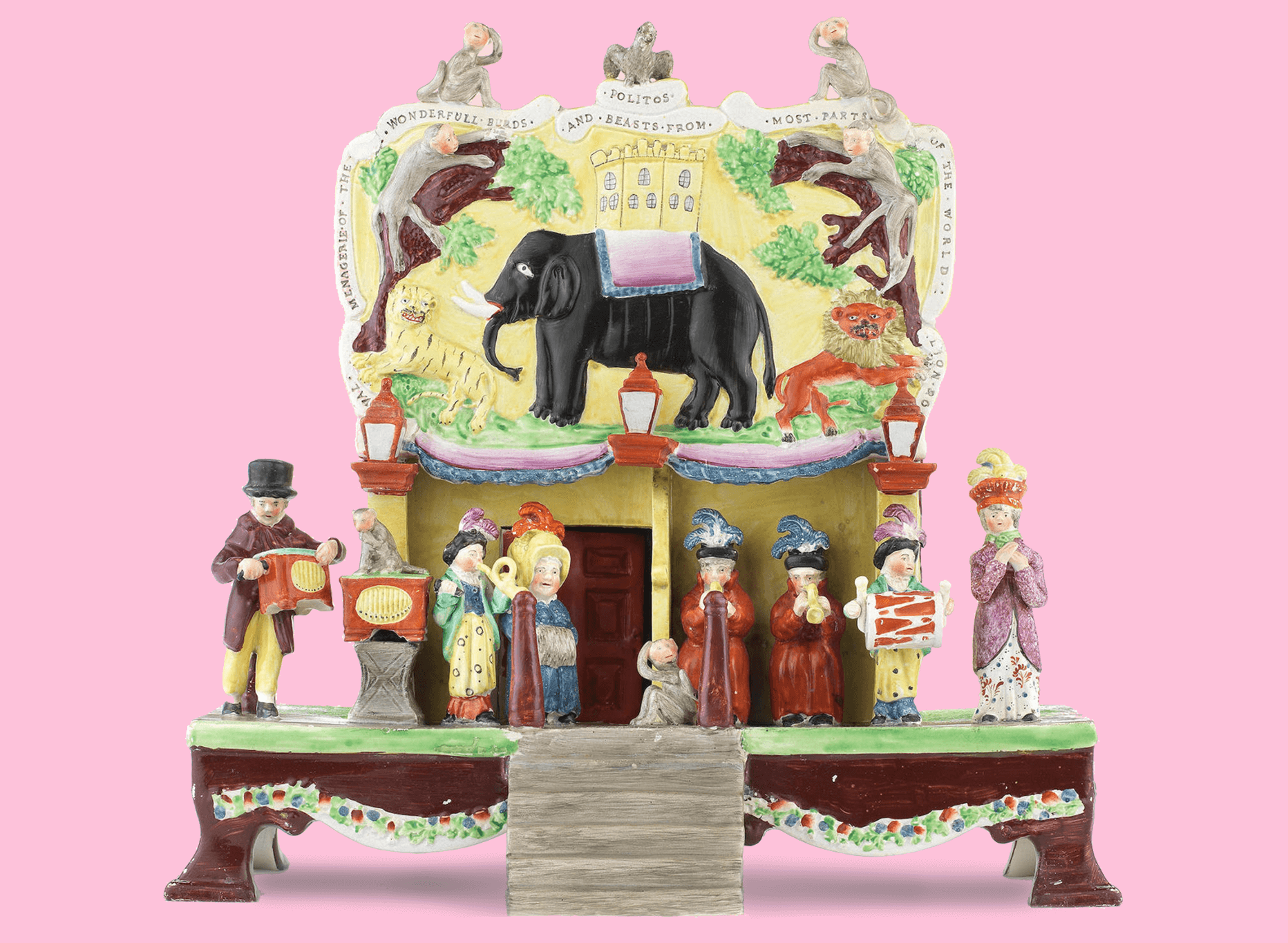Queen Victoria
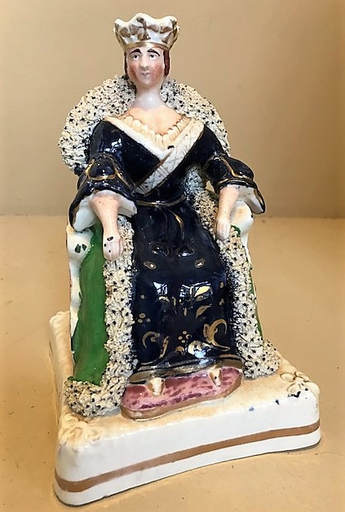

The year 2019 marks the 200th anniversary of the birth of Queen Victoria who was potted in many forms by the Staffordshire potters. It therefore seems entirely appropriate for us to start this year with a figure of the Queen as our Figure of the Month.
Victoria (Alexandrina Victoria; 24 May 1819 – 22 January 1901) was Queen of the United Kingdom of Great Britain and Ireland from 20 June 1837 until her death. On 1 May 1876, she adopted the additional title of Empress of India.
Victoria was the daughter of Prince Edward, Duke of Kent and Strathearn, the fourth son of King George III. Both the Duke and the King died in 1820, and Victoria was raised under close supervision by her mother, Princess Victoria of Saxe-Coburg-Saalfeld. She inherited the throne at the age of 18, after her father’s three elder brothers had all died, leaving no surviving legitimate children. The United Kingdom was already an established constitutional monarchy, in which the sovereign held relatively little direct political power. Privately, Victoria attempted to influence government policy and ministerial appointments; publicly, she became a national icon who was identified with strict standards of personal morality.


Victoria married her first cousin Prince Albert of Saxe-Coburg and Gotha in 1840. Their nine children married into royal and noble families across the continent, tying them together and earning her the sobriquet “the grandmother of Europe”. After Albert’s death in 1861, Victoria plunged into deep mourning and avoided public appearances. As a result of her seclusion, republicanism temporarily gained strength, but in the latter half of her reign, her popularity recovered. Her Golden and Diamond Jubilees were times of public celebration.
Her reign of 63 years and seven months was longer than that of any of her predecessors and is known as the Victorian era. It was a period of great industrial, cultural, political, scientific, and military change within the United Kingdom and was marked by great expansion of the British Empire.
More Figures of the month
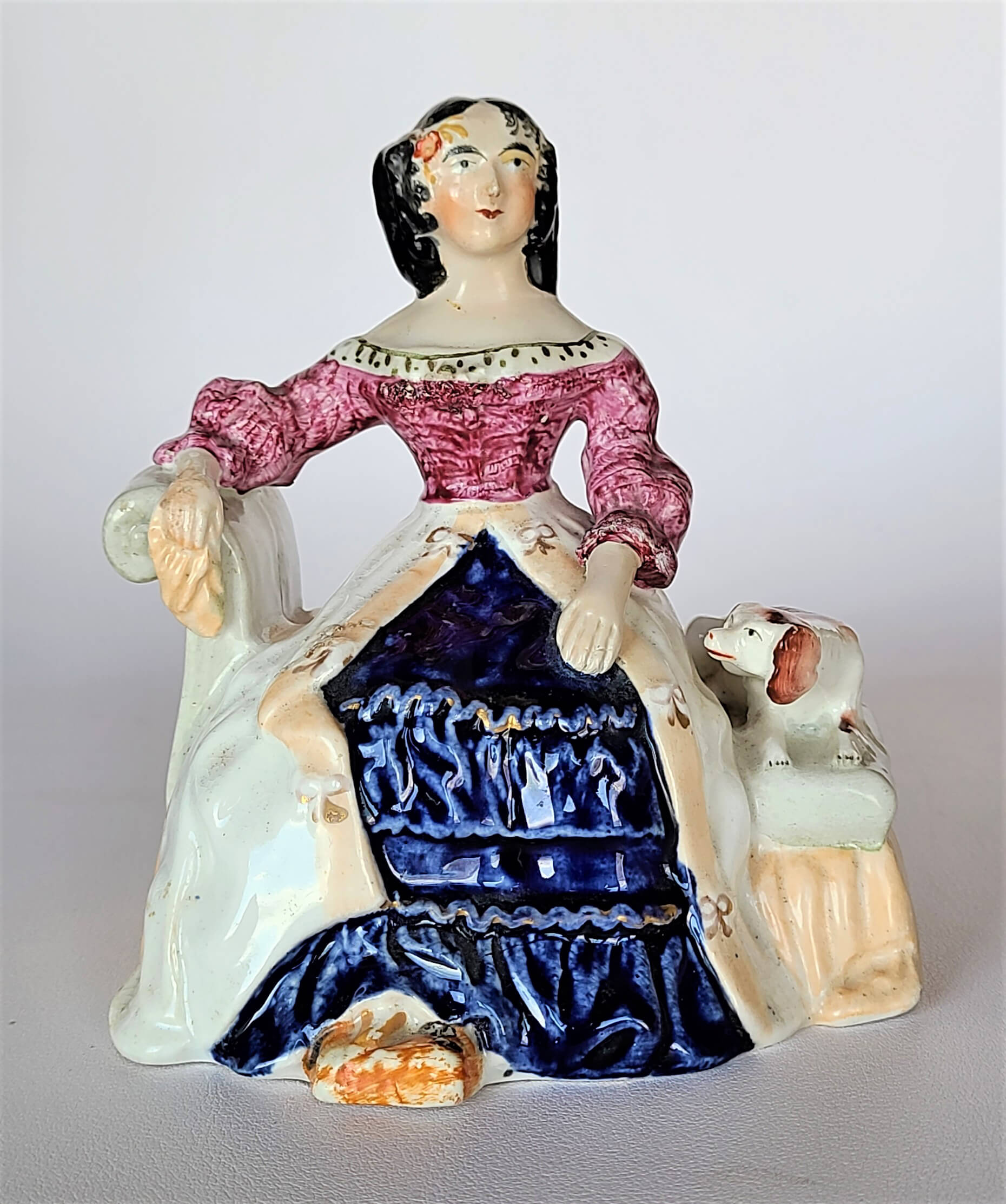

Elizabeth Barrett Browning
This is a rare Staffordshire figure of a woman seated on a couch, with her dog beside her. It is generally believed to represent Elizabeth Barrett Browning, and her dog Flush. This figure stands about 5 ¼” tall and dates to approximately 1846-1850.
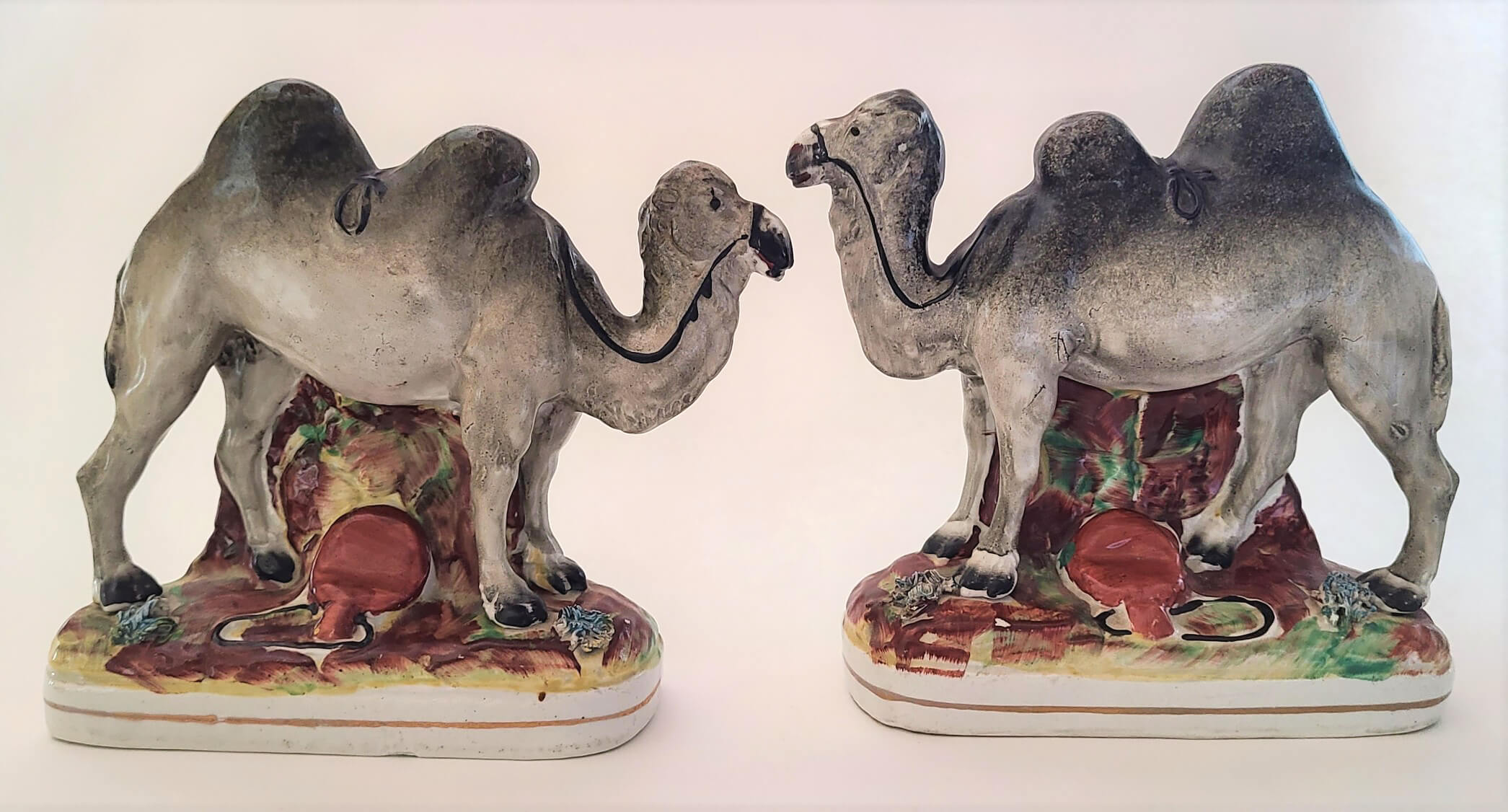

A pair of camels
This is an interesting pair of Staffordshire camels, each about 6 1/4” tall, and dating to approximately 1860.
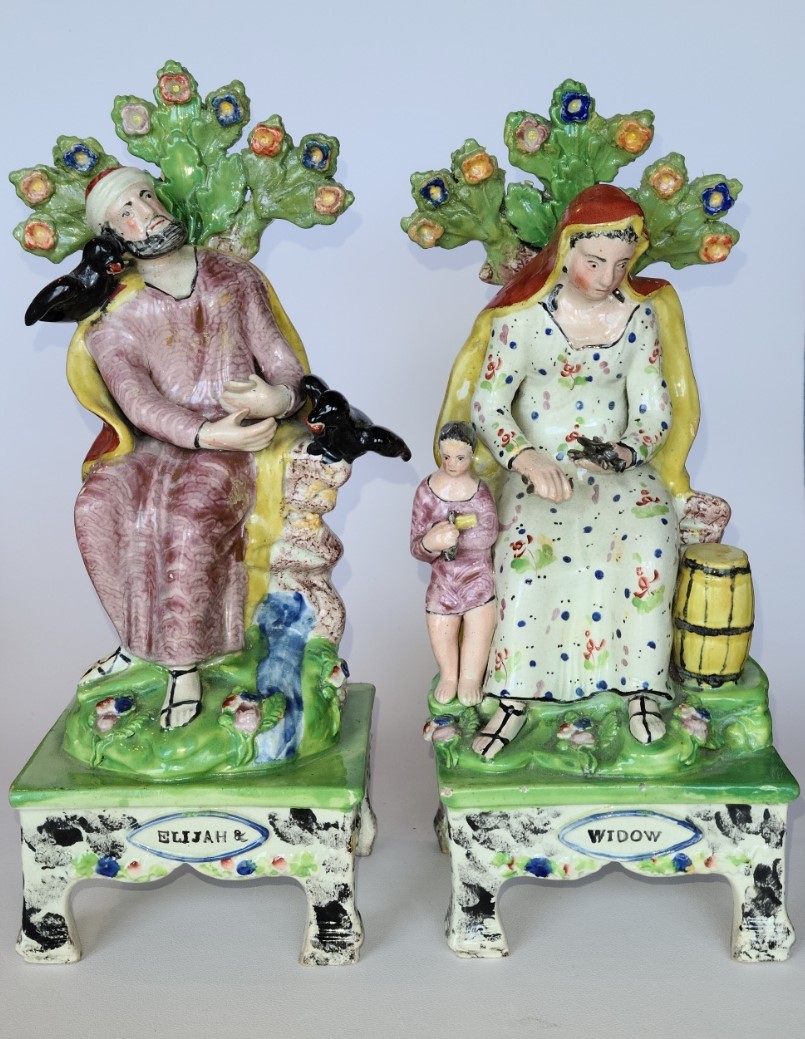

Prophet Elijah and the Widow of Zarephath
This is a fine pair of early Staffordshire figures of Elijah, the Old Testament prophet, and the Widow of Zarephath. This pair of figures is attributed to Obadiah Sherratt, the table bases, bocage, and flowers being typical of Sherratt.
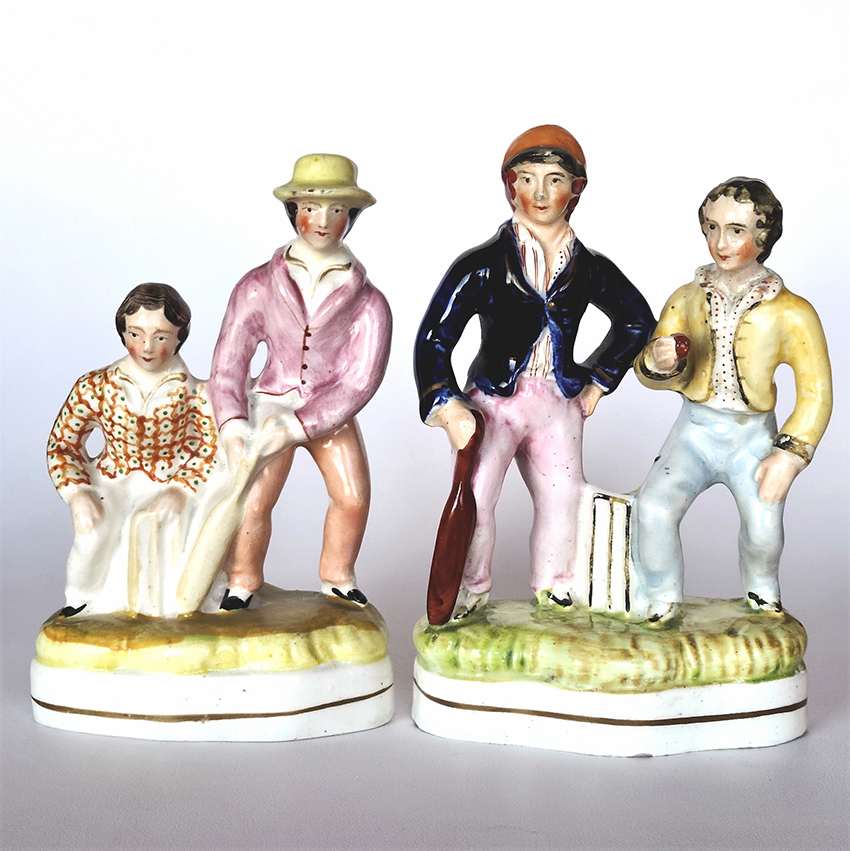

Boys playing cricket
This is a pair of Staffordshire figures of unidentified boys playing cricket, standing 6 ½” and 6 ¾” tall, dating to around 1850.
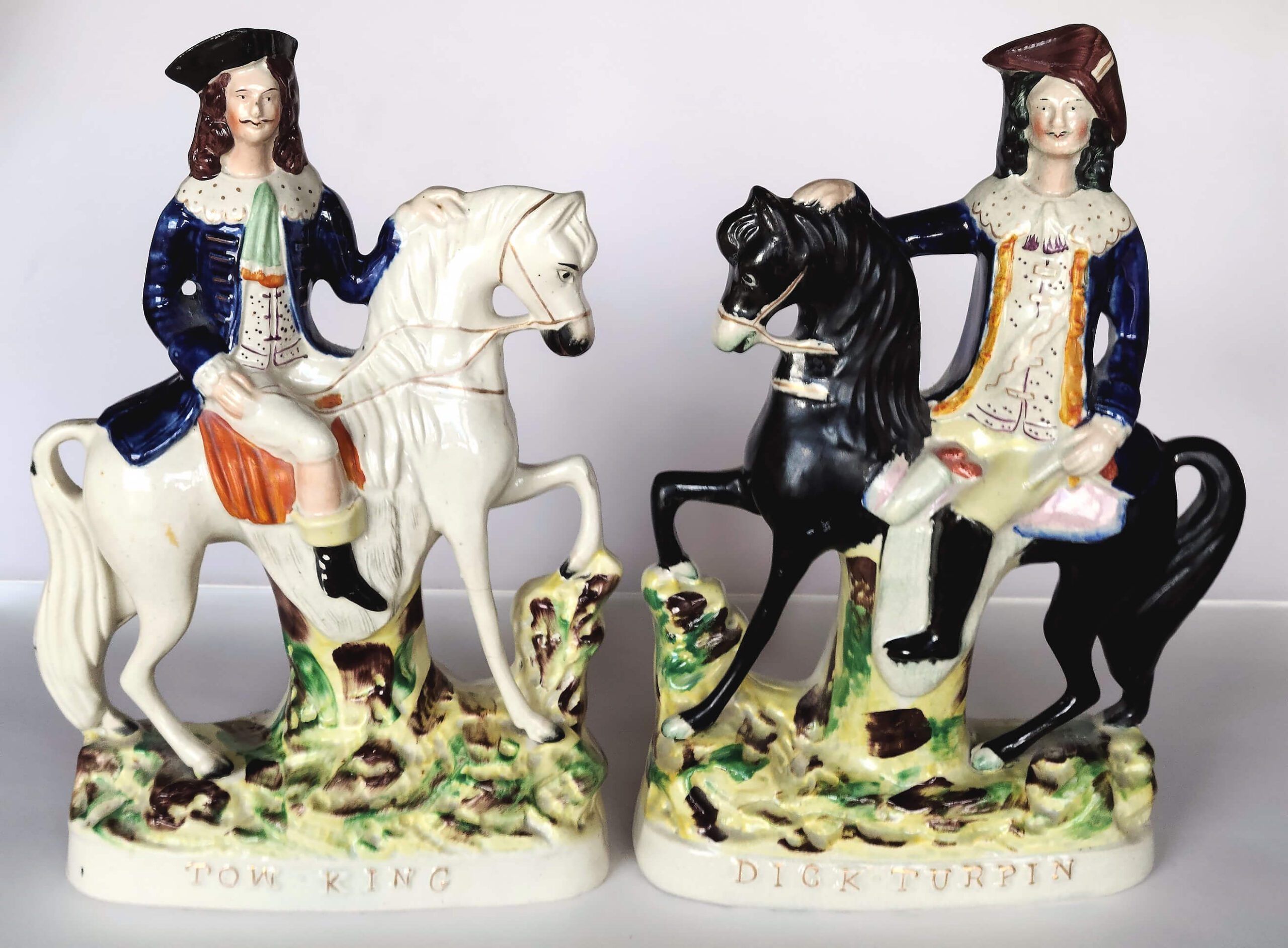

Tom King and Dick Turpin
This is a fine pair of Staffordshire figures of Tom King and Dick Turpin, probably originating from a theatrical production. Note the four separately moulded legs on each horse.
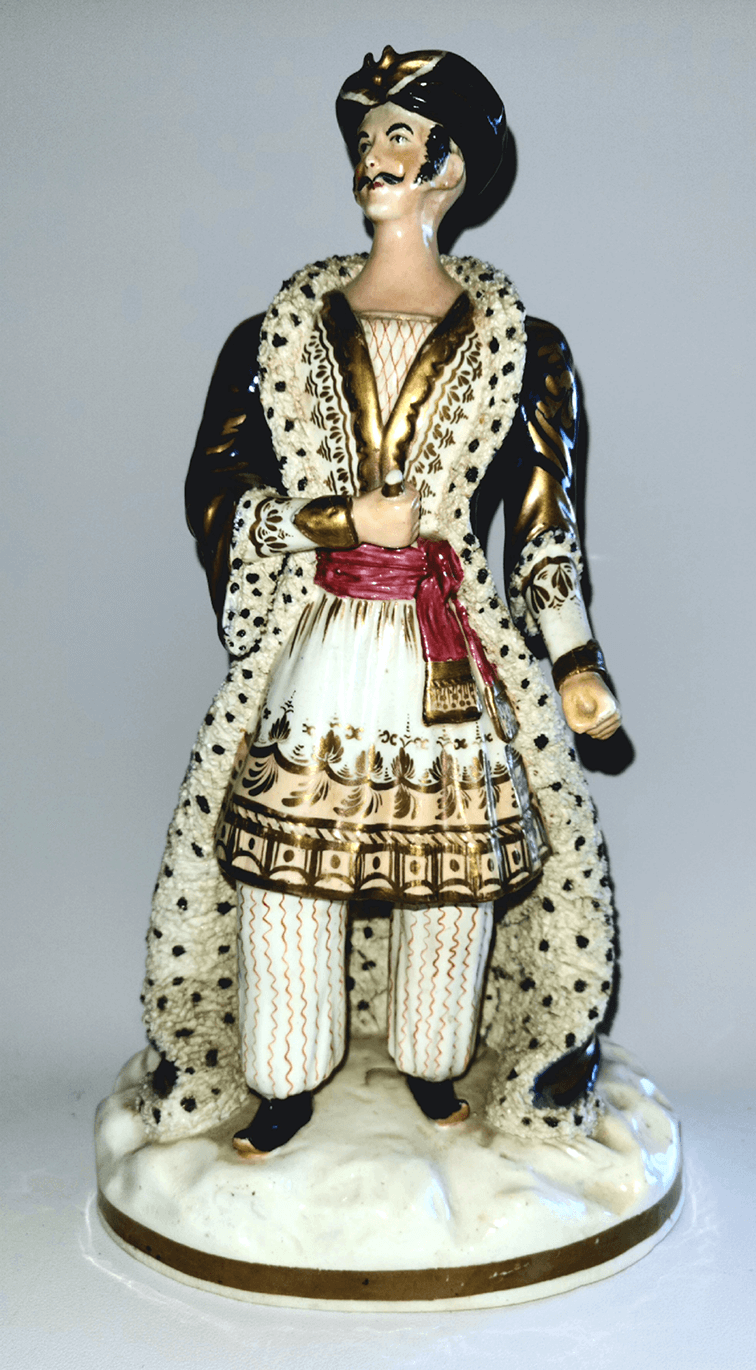

Artabanes
This is a theatrical figure representing an actor in the role of Artabanes, from the opera Artaxerxes. The figure stands 11 3/4” tall, dates to approximately 1830-1840, and is very rare. There is a dagger in his right hand, part of the blade being hidden beneath his sash. The interior and the edging of his coat are fully lined with ermine.


